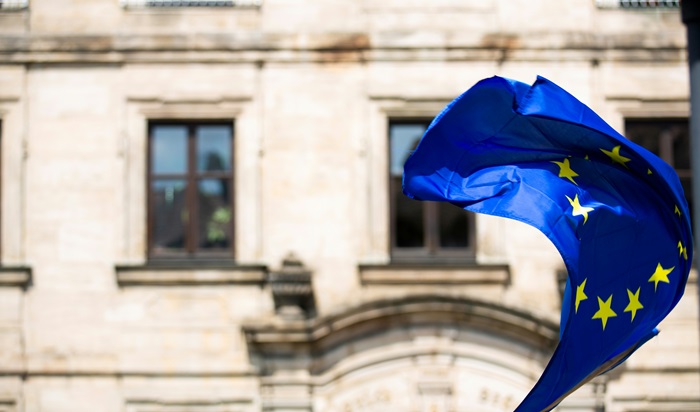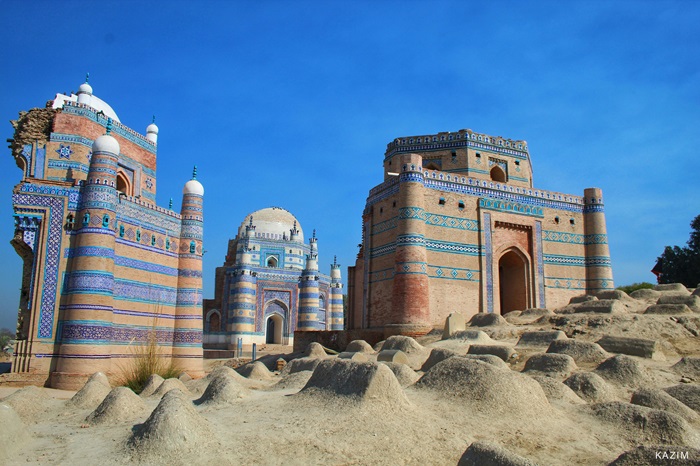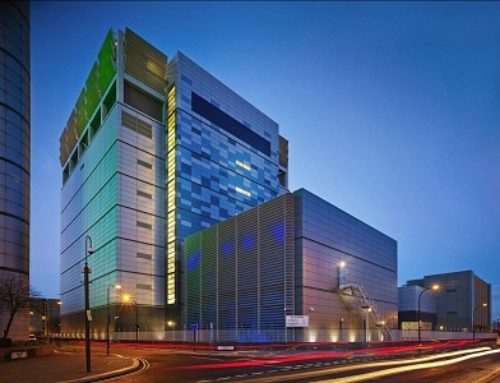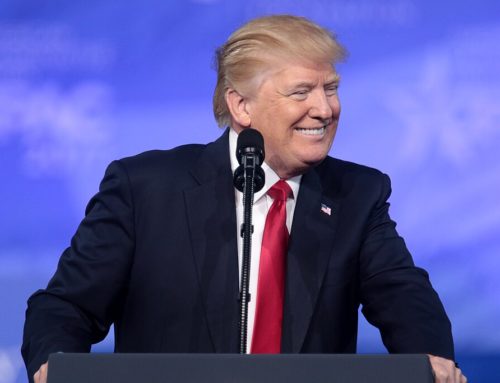1. FDI in Pakistan: Landscape and Trends
According to the UNCTAD’s 2022 World Investment Report, FDI inflows to Pakistan stood at USD 2.1 billion in 2021, remaining stable compared to the previous year. The total stock of FDI reached USD 32.9 billion, equivalent to approximately 9.5% of Pakistan’s GDP.
The financial sector receives the highest FDI, followed by the chemicals industry and construction. China remains the dominant investor, but recently, the United Kingdom, South Korea, and Japan have increased their investments.
In FY 2022, Pakistan attracted FDI amounting to USD 1.86 billion, with significant inflows in energy, financial services, and oil and gas sectors. Chinese investment, despite a 29% decline due to slowdown in China-Pakistan Economic Corridor (CPEC) projects, remained consistent. The U.S. and Switzerland were also notable investors.
Pakistan’s attractiveness for investment is gradually improving, although challenges such as security concerns, electricity shortages, and a cumbersome investment climate persist. It ranks lower than neighbouring India but on par with Sri Lanka and Bangladesh in terms of investment potential.
Foreign investors (except Indian and Israeli citizens/businesses) can establish, own, operate, and dispose of interests in most types of businesses in Pakistan, subject to certain restrictions.
Prospects for the Future
1. Special Investment Facilitation Council (SIFC):
The establishment of the SIFC aims to address investment-related issues. It prioritises defence production, agriculture, mines and minerals, energy, and the IT industry.
The ambitious goal is to attract $100 billion in FDI within three years, with the ultimate aim of achieving a nominal GDP of $1 trillion by fiscal year 2035.
2. India-Pakistan Potential:
Given the importance of FDI for economic growth, there is potential for Pakistan to attract FDI from India. Strengthening economic ties and easing cross-border investment barriers could enhance FDI inflows.
3. Challenges and Reforms:
Addressing security concerns, improving infrastructure, and streamlining regulatory processes are critical.
Enhancing transparency, reducing corruption, and creating a more favourable business environment will boost investor confidence.
In conclusion, Pakistan’s FDI landscape is evolving, and strategic efforts are needed to unlock its full potential. As the country continues to address challenges and implement reforms, it can position itself as an attractive destination for foreign investment.
Pakistan’s FDI Model and the BRICS+ Approach
# Understanding BRICS+
The BRICS group comprises five major emerging economies: Brazil, Russia, India, China, and South Africa. These nations have played a significant role in shaping global economic dynamics. However, in recent years, there has been a growing interest in expanding this group to include other promising economies beyond the original five. This extended concept is referred to as BRICS+.
# Pakistan’s Strategic Alignment
Pakistan recognises the potential of the BRICS+ framework and aims to leverage it for its own economic growth. Here’s how:
1. Diversification of Investment Sources:
Historically, Pakistan has heavily relied on traditional partners for FDI. By embracing the BRICS+ approach, Pakistan seeks to diversify its investment sources.
Beyond the BRICS nations, Pakistan is exploring opportunities with countries like Turkey, Indonesia, Mexico, and Vietnam. These emerging economies offer untapped potential for investment inflows.
2. Infrastructure and Connectivity:
The BRICS+ concept emphasises infrastructure development and connectivity. Pakistan’s strategic location as a gateway to Central Asia and the Middle East positions it well to benefit from enhanced connectivity.
Projects like the China-Pakistan Economic Corridor (CPEC) align with the BRICS+ vision, fostering economic integration and trade linkages.
3. Sectoral Collaboration:
Pakistan aims to collaborate with BRICS+ countries in specific sectors. For instance:
Energy: Pakistan can learn from Russia’s expertise in energy exploration and production.
Technology: Cooperation with China and India can boost Pakistan’s tech sector.
Agriculture: Brazil’s agricultural advancements can inspire Pakistan’s agribusiness.
4. Investment Promotion and Ease of Doing Business:
Pakistan is actively working to improve its investment climate. Reforms include simplifying regulations, enhancing transparency, and providing investor-friendly incentives.
Learning from BRICS+ members’ success stories, Pakistan aims to create an environment conducive to foreign investment.
# Challenges and Opportunities
While the BRICS+ approach offers immense potential, challenges remain:
Geopolitical Dynamics: Balancing interests among diverse partners can be complex.
Domestic Reforms: Pakistan must address structural issues to attract sustained FDI.
Risk Management: Assessing risks associated with different partners is crucial.
In conclusion, Pakistan’s new FDI model, influenced by the BRICS+ concept, seeks to broaden horizons, foster collaboration, and position Pakistan as an attractive investment destination. As the world economy evolves, Pakistan’s strategic alignment with BRICS+ can drive sustainable economic growth.
2. Spain’ €2 Billion Sovereign Wealth Fund

Sam Williams via Unsplash
In the heart of Madrid, where centuries-old architecture meets modern innovation, a financial phoenix is rising. Cofides, Spain’s sovereign wealth fund, has unfurled its wings and is poised to reshape the nation’s economic landscape.
The €2 Billion Catalyst
Cofides, short for Compañía Española de Financiación del Desarrollo, has long been a silent force behind Spain’s international ventures. But now, it steps into the spotlight with a formidable war chest—a €2 billion fund dedicated to catalysing growth, fostering innovation, and propelling Spanish companies onto the global stage.
From Flamenco to Fintech
Spain, known for its flamenco rhythms and sun-kissed beaches, is also home to a vibrant entrepreneurial spirit. Cofides recognises this untapped potential. Its mission? To bridge the gap between tradition and transformation. From Andalusian olive groves to Barcelona’s tech hubs, Cofides aims to fuel diverse sectors:
Renewable Energy:
As the world pivots toward sustainability, Cofides seeks to empower Spanish clean energy pioneers. Wind farms in Galicia, solar arrays in Seville—the future hums with promise.
Infrastructure:
High-speed rail networks, smart cities, and port expansions—Cofides envisions a Spain seamlessly connected, where logistics meet innovation.
Tech Startups:
Madrid’s Calle de Serrano echoes with the buzz of fintech disruptors. Cofides aims to nurture these fledgling unicorns, propelling them beyond national borders.
The Global Stage Beckons
Cofides isn’t content with domestic triumphs. It gazes outward, eyes fixed on the global arena. From Latin America to Africa, Cofides seeks strategic partnerships, joint ventures, and cross-border collaborations. Spanish expertise meets international markets—a symphony of opportunity.
Challenges Ahead
Yet, challenges loom. Geopolitical shifts, economic uncertainties, and the ever-present specter of risk demand Cofides’ astute navigation. But with seasoned leadership, a commitment to transparency, and a dash of Iberian resilience, Cofides stands ready.
3. Safeguarding Europe’s Strategic Interests: The EU’s FDI Screening Regime

Markus Spiske via Unsplash
In an interconnected global economy, where capital flows transcend borders, the EU stands at a critical juncture. Balancing openness to foreign investment with safeguarding national security and public order is no small feat. Enter the EU FDI Screening Regulation, a groundbreaking framework designed to navigate this delicate equilibrium.
Origins and Purpose
The seeds of the EU FDI Screening Regulation were sown in the fertile soil of geopolitical concerns. Certain Member States—led by France, Germany, and Italy—raised alarm bells. They feared that foreign investors, particularly state-owned enterprises pursuing strategic industrial policies, might acquire critical assets and key technologies from EU companies. The catch? Often, there were no reciprocal rights for EU investors in the countries from which the FDI originated.
A Shield and a Gateway
The EU FDI Screening Regulation, which came into full force on October 11, 2020, serves a dual purpose:
1. Preserving Strategic Interests:
It empowers EU member states to screen specific foreign direct investments within their territories. The goal? Safeguarding national security and public order. When critical assets or technologies are at stake, vigilance becomes paramount.
2. Market Openness:
Simultaneously, the EU remains committed to openness. The regulation doesn’t outright block investments; instead, it creates a cooperative mechanism. The European Commission can review investments of ‘Union interest’ and issue non-binding opinions to the relevant member state. It’s a delicate dance—protecting vital interests while keeping the investment doors ajar.
3. The Road Ahead
As Europe navigates a complex landscape of economic shifts, technological leaps, and geopolitical tensions, the EU FDI Screening Regulation stands as a sentinel. It encourages cooperation, information sharing, and timely responses—all while respecting business-friendly deadlines and confidentiality requirements.
In the corridors of Brussels and beyond, policymakers, investors, and businesses watch closely. The EU’s strategic interests are at stake, and the FDI Screening Regulation is the compass guiding their journey.
4. Navigating Turbulent Waters: The 9% Decline in FDI for Developing Economies

Nuno Alberto via Unsplash
In the corridors of economic power, where capital flows intersect with geopolitical currents, a sobering trend emerged in 2023. Foreign direct investment (FDI), a lifeline for developing nations, faced headwinds—a 9% decline that reverberated across continents.
The Numbers Speak
According to the United Nations Conference on Trade and Development (UNCTAD), FDI flows to developing countries dwindled to $841 billion in 2023. This contraction unfolded against a backdrop of global uncertainty, where investment hesitancy and economic fragility cast their shadows.
Asia’s Struggle:
Developing countries in Asia bore the brunt, witnessing a 12% drop in FDI. The region, home to bustling markets and ambitious growth, grappled with shifting tides.
Africa and Latin America:
While flows to Africa and Latin America remained relatively stable, they stood at the crossroads. The Caribbean islands whispered tales of resilience, while African nations juggled greenfield projects and infrastructure financing challenges.
Behind the Headlines
Dig deeper, and the narrative unfolds. The seemingly modest global increase of 3% in FDI to an estimated $1.37 trillion masked a critical truth. A handful of European “conduit” economies inflated the headline figures. Exclude them, and the global FDI landscape reveals a stark 18% decline.
Asia’s Dichotomy
Within Asia’s vast expanse, stories diverged. China, a behemoth, reported a rare 6% decrease in FDI inflows. Yet, its greenfield project announcements surged by 8%—a paradox of ebb and flow. Meanwhile, India, despite a 47% drop in FDI inflows, clung to its position among the top global destinations for greenfield ventures.
Africa’s Uneven Path
Africa’s FDI flows held steady at an estimated $48 billion. Morocco, Kenya, and Nigeria unfurled greenfield project banners, but a one-third reduction in project finance deals raised concerns. Infrastructure financing, vital for Africa’s growth, faced crossroads.
Latin America’s Contrasts
In Latin America, the investment landscape danced to contrasting tunes. Some nations soared, while others stumbled. The year 2023 etched tales of resilience and caution, as the region grappled with its destiny.
As we dissect this FDI decline, we glimpse both challenges and opportunities. The compass points to recalibration, innovation, and strategic choices. For developing economies, the journey continues—a quest for stability, growth, and resilience.
5. India Eyes $100 Billion Investment From Switzerland and Norway

Pavan Gupta via Unsplash
In the bustling corridors of international trade, a groundbreaking alliance is taking shape. India, the world’s most populous nation, is on the cusp of finalising a historic trade deal—one that could see a select group of European nations invest a staggering $100 billion over the next 15 years. The architects of this transformative pact? Switzerland and Norway, two economic powerhouses with a shared vision of bolstering trade ties and unlocking new opportunities.
The European Free Trade Association (EFTA), comprising Switzerland, Norway, Iceland, and Liechtenstein, has committed to investing in India as part of this trade agreement. While the contours of the deal have been agreed upon, the final investment amount remains a focal point of deliberation. Could it truly reach the monumental figure of $100 billion? The negotiations continue, with India pushing for a legally binding commitment, while European officials tread cautiously.
If this deal materialises, it will mark a historic milestone—an investment commitment of unprecedented magnitude secured by India through a free trade agreement. Switzerland, India’s largest commercial partner within the EFTA bloc, has already laid the groundwork for this transformative partnership. Legal clarifications are being expedited to ensure timely signing before India’s upcoming elections.
The implications are far-reaching. For EFTA countries, including Switzerland and Norway, the agreement opens doors to a potential market of 1.4 billion people. Manufacturers can export processed food, beverages, electrical machinery, and engineering products at reduced tariffs. The pharmaceutical and medical devices industry also stands to benefit.
As the ink dries on this momentous pact, India’s economic landscape braces for an infusion of capital, innovation, and collaboration. The journey toward a more interconnected world—one fueled by strategic investments—is well underway.
Featured image Ali Kazim via Unsplash







